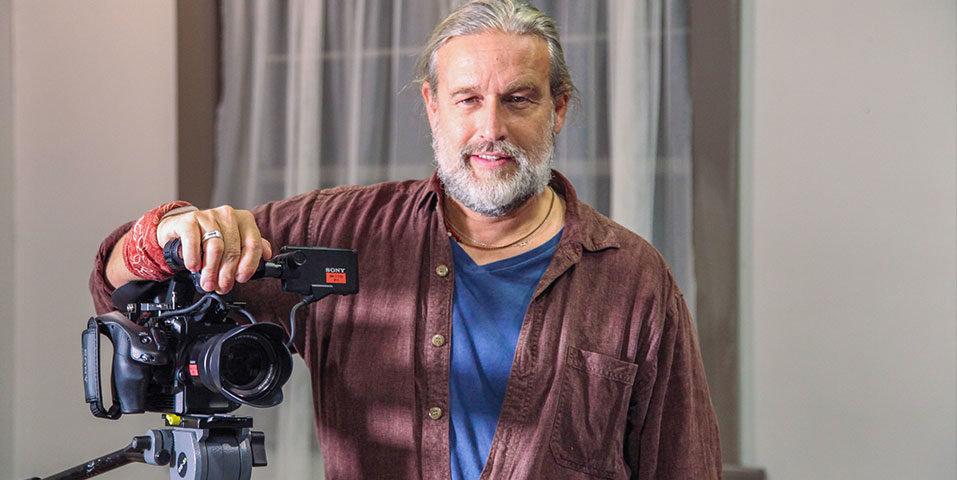We all have mobile phones in our pockets, but what does it take to become a mobile content creator? Mobile Content Creation distils the essential filmmaking knowledge to empower video creation with mobile device-built tools and accessible applications. The emphasis of the course is on developing skills to deliver a polished output with music, graphics, titles, and logos, all using an iPhone, Android, or iPad.
We sat with cinematographer and expert tutor Gareth Tillson to learn what makes this course unique and how students experiment hands-on with video capturing and editing skills, constructing a narrative that delivers engaging information efficiently.
Including video in the communication mix provides cost-effective flexibility to engage directly with the audience while maintaining authenticity and spontaneity. With the ability to convey information layered with demonstration or showcasing other elements, video delivers better message retention and recall while enabling a more direct and personal engagement to build a relationship of trust.
An established cinematographer, Gareth has shot shorts, documentaries, commercials and music clips, and his debut feature, LBF, premiered at SXSW Film Festival in 2011. Here’s some of Gareth’s inside knowledge on Mobile Content Creation.
Who is a typical Mobile Content Creation student?
“The typical student is often upskilling and adding a string to their bow in whatever profession they’re in. I’ve had many journalists who’ve worked in journalism for a long time who now feel they need to know more about creating audiovisual content. I’ve had actors who want to work and make short films with their actor friends outside of organised productions. I’ve had quite a lot of people working for local government who want to produce informational videos in their area or how-to videos for internal communications.
There are many applications in every walk of life. Students are quite diverse, even those who just want to make family videos look better or be more fun.”
How do the Mobile Content Creation students apply the skills to their work?
“A lot of people who come to do the course probably don’t have the confidence to stand up and be the person responsible for creating something that represents their company or their brand. By doing this course, takes you once around the block with the different techniques and what you can get out of shooting and editing on a mobile phone. That’s the first thing that they walk away with is a confidence that they understand the workflow of it. They have to start somewhere, and each video will get better than the last one.”
Mobile Content Creation is delivered online and presential, can you explain how the two delivery methods differ?
“The online and presential delivery cover the same learning content, workflows, and techniques. The presential course is more intense because there’s a lot to learn and experiment with in one day. The online course is almost the opposite, with weekly meetings that give students the time to digest the materials, review the learning, and spend more time doing the exercises.
The main difference between the two is that the presential course is very fast and dense, demanding high attention, whereas the online course is more laid-back. However, students have to ensure that they maintain their own momentum.”
What is the key piece of advice when creating mobile content that will immediately elevate the quality of the content?
“I’m going to share two pieces of advice because the first one is really short.
First, always clean the lens. And I repeat again: Always clean the lens. Just every single time, do it! Every time the device transitions from being a phone to a camera, get those finger marks off. Use soft cotton, anything, it makes a huge difference in how the picture looks. Always clean the lens. That’s number one.
Number two is experimenting with the capabilities of the phone. There are three things that I’ve noticed that people don’t tend use, and they’re so easy to use. The phone has the capability of shooting video, photos, slow-motion and time lapse. That’s four very different flavours of visuals to play with. Creating a video is not just about shooting a video, it is about mixing all the visual possibilities to best represent the intended information or message. Slow-motion is sexy, time lapse is sexy, stills are great for fine detail when nothing is moving. Once you get the habit of doing it, you also start noticing what other people are doing, and then you start using their techniques and understanding the language, which really is being developed right now.”
Sound like the course for you? Learn with Gareth how to create short videos with your mobile – Mobile Content Creation.
